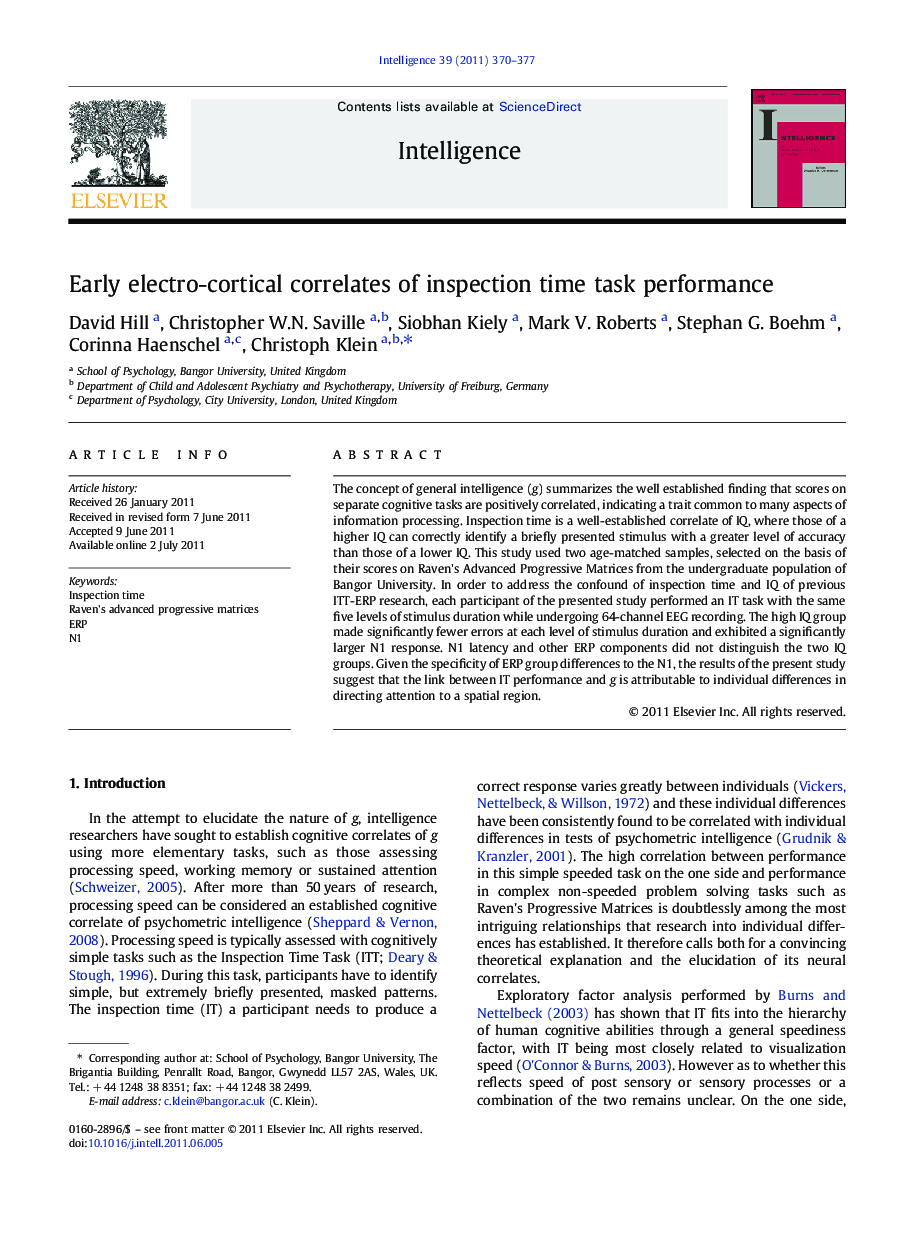| Article ID | Journal | Published Year | Pages | File Type |
|---|---|---|---|---|
| 929147 | Intelligence | 2011 | 8 Pages |
The concept of general intelligence (g) summarizes the well established finding that scores on separate cognitive tasks are positively correlated, indicating a trait common to many aspects of information processing. Inspection time is a well-established correlate of IQ, where those of a higher IQ can correctly identify a briefly presented stimulus with a greater level of accuracy than those of a lower IQ. This study used two age-matched samples, selected on the basis of their scores on Raven's Advanced Progressive Matrices from the undergraduate population of Bangor University. In order to address the confound of inspection time and IQ of previous ITT-ERP research, each participant of the presented study performed an IT task with the same five levels of stimulus duration while undergoing 64-channel EEG recording. The high IQ group made significantly fewer errors at each level of stimulus duration and exhibited a significantly larger N1 response. N1 latency and other ERP components did not distinguish the two IQ groups. Given the specificity of ERP group differences to the N1, the results of the present study suggest that the link between IT performance and g is attributable to individual differences in directing attention to a spatial region.
Research highlights► High and low scorers on R-APM took part in an ITT with 5 levels of stimulus duration. ► ERP and behavioural accuracy during ITT measured in high and low IQ groups. ► The high IQ group showed greater N1 amplitudes than the low IQ group. ► No effect of sustained attention within both the high and the low IQ groups. ► ITT measures how attention facilitates processing at a region of space.
